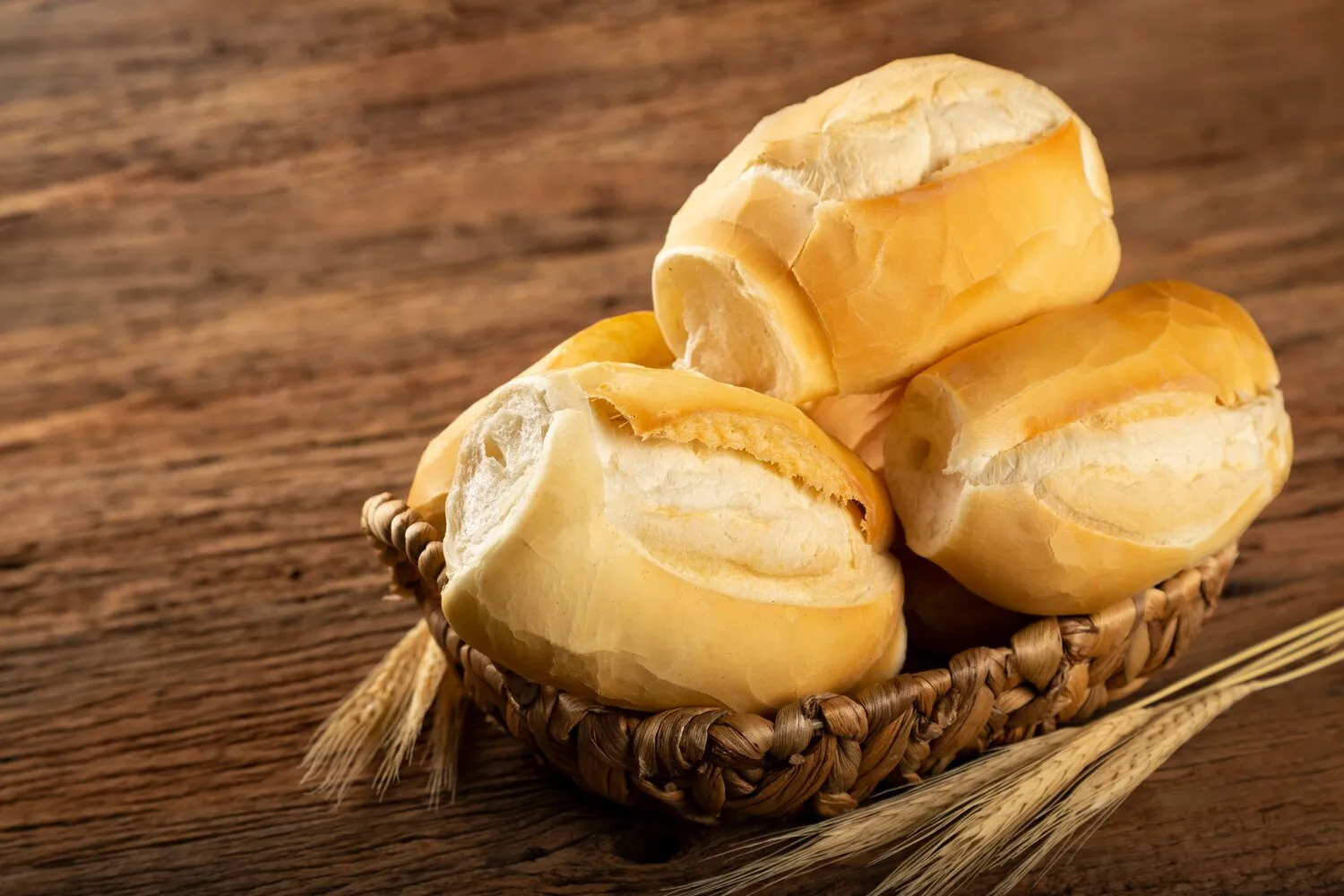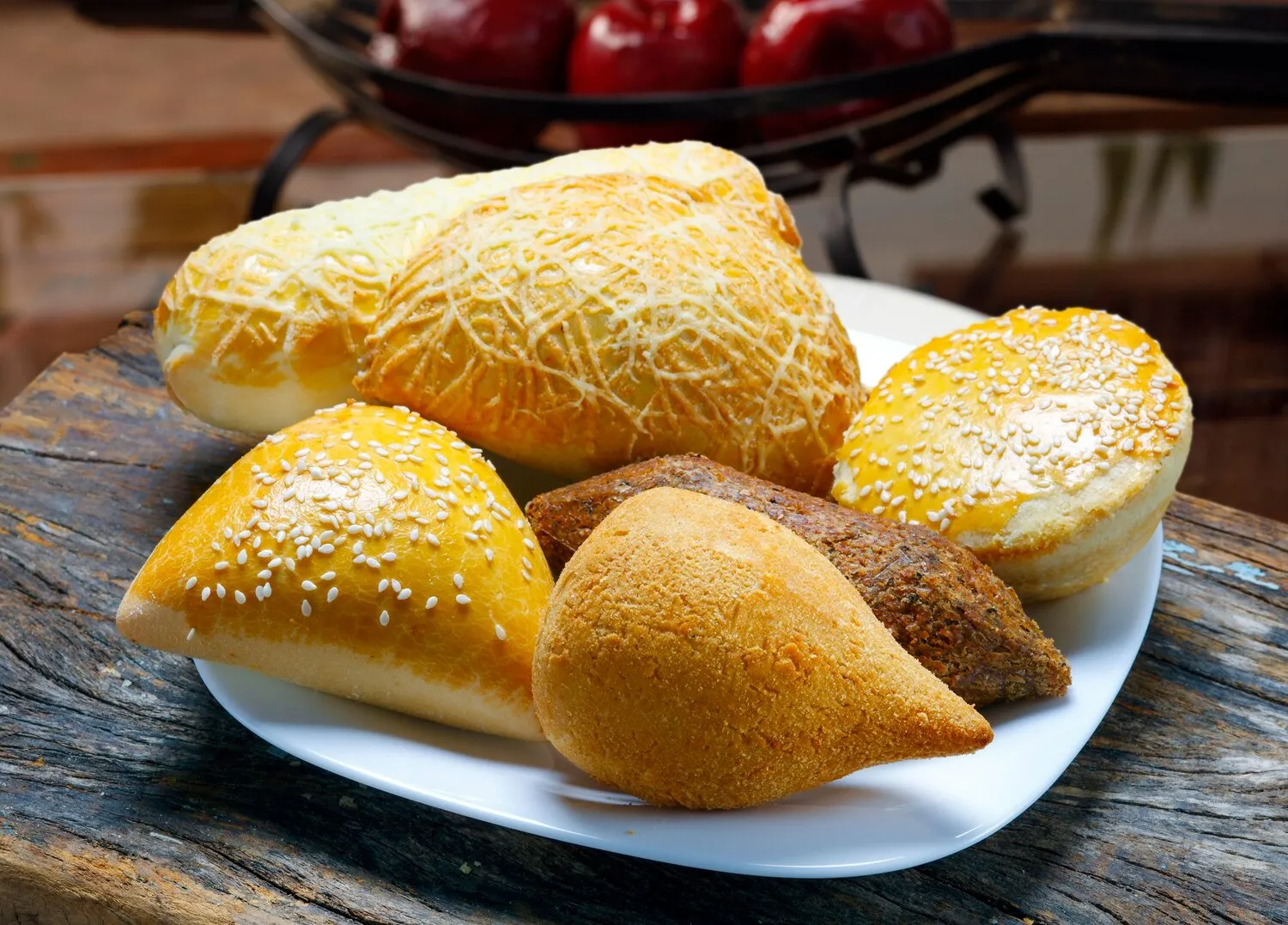
Pão Francês
Classic Brazilian French bread roll, a staple for breakfast.
Nutrition Facts
* The % Daily Value (DV) tells you how much a nutrient in a serving of food contributes to a daily diet. 2,000 calories a day is used for general nutrition advice.
Panificadora Guajará
Pão Francês, despite its name ('French bread' in Portuguese), is not a direct descendant of traditional French baguettes. It emerged in the early 20th century, influenced by the desire of Brazilian elites returning from Europe to replicate the bread they enjoyed abroad, particularly in France. Local bakers adapted recipes and techniques using Brazilian wheat, resulting in a unique bread that quickly became a national staple.
Pão Francês is deeply ingrained in Brazilian daily life, especially at breakfast. It's more than just bread; it represents a simple pleasure, a daily ritual, and a shared cultural experience.
Breakfast Staple
Pão Francês is almost universally consumed for breakfast, often paired with butter, cheese, ham, or 'requeijão' (a Brazilian cream cheese). It's a quick, affordable, and satisfying way to start the day.
Ubiquitous Presence
Found in virtually every bakery ('padaria') across Brazil, Pão Francês is easily accessible and a reliable source of nourishment for people from all socioeconomic backgrounds.
Social Gathering Point
The local 'padaria' is often a social hub, especially in the morning. People gather to buy fresh Pão Francês, chat with neighbors, and start their day in community.
Versatile Usage
Beyond breakfast, Pão Francês is used for sandwiches (especially 'misto quente', a grilled ham and cheese), as an accompaniment to meals, and even in recipes like bread pudding ('pudim de pão').
Pão Francês offers a simple yet satisfying flavor profile centered around a crisp crust and a soft, slightly chewy interior. The flavors are subtly yeasty with a hint of saltiness.
The dominant flavor is the clean, wheaty taste of the dough, enhanced by the Maillard reaction during baking which creates the characteristic crisp and slightly caramelized crust. The interior is soft and airy with a delicate chewiness, offering a contrasting texture to the crust. A touch of salt balances the flavors and enhances the overall taste.
Freshness is Key
Pão Francês is best enjoyed when freshly baked. The crust loses its crispness quickly, so consume it within a few hours of purchase if possible.
Proper Storage
To maintain freshness, store Pão Francês in a paper bag (not plastic, which traps moisture and softens the crust) at room temperature. Avoid refrigeration, as it will dry out the bread.
Reviving Stale Bread
If the Pão Francês has become stale, lightly moisten the crust with water and bake it in a preheated oven (350°F/175°C) for a few minutes to restore some of its crispness.
Freezing for Later
Pão Francês can be frozen for longer storage. Wrap it tightly in plastic wrap and then in a freezer bag. Thaw at room temperature before reheating.
Explore additional Bakery dishes and restaurants
Explore BakeryDiscover top dining spots and culinary experiences in Ananindeua.
Explore AnanindeuaLearn more about the food culture, restaurant scene, and culinary heritage of Brazil.
Explore Brazil
